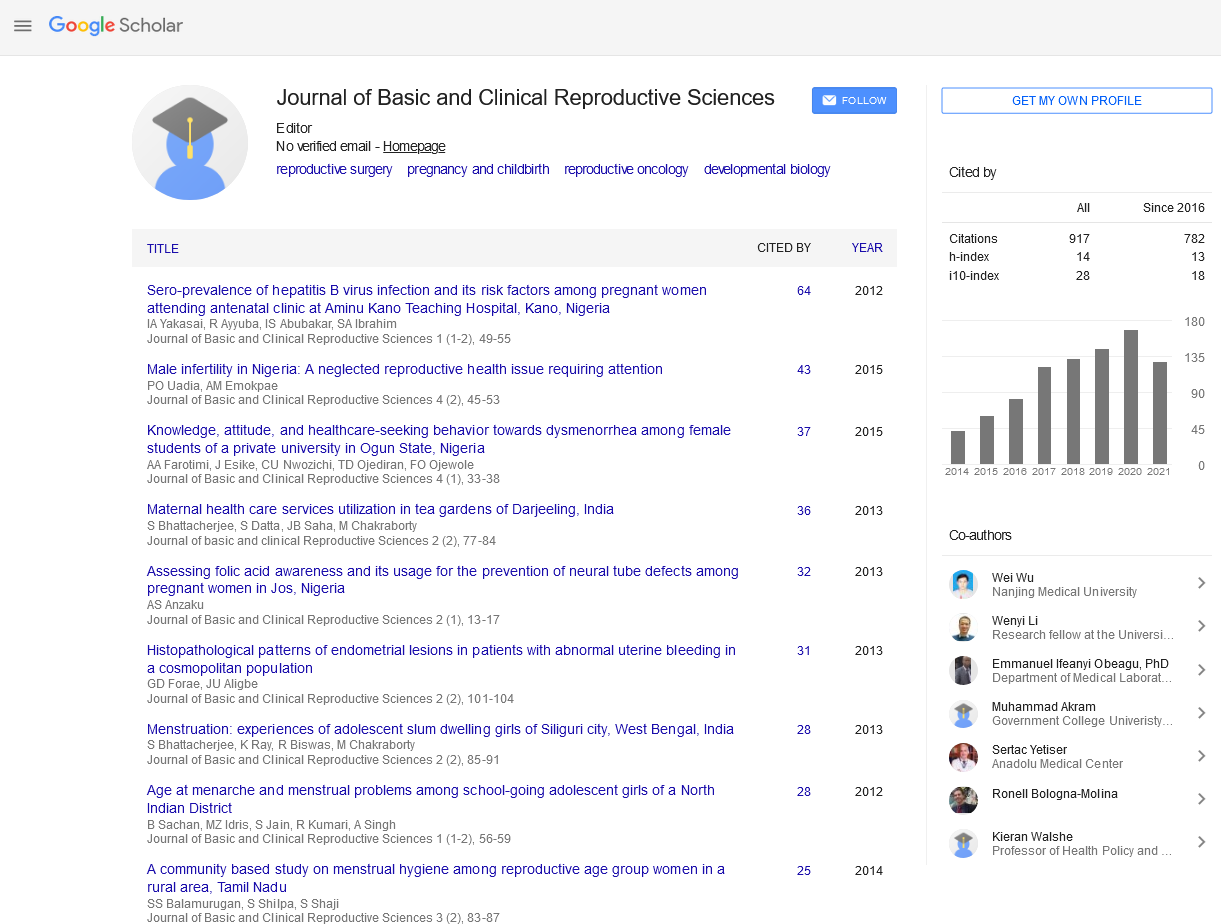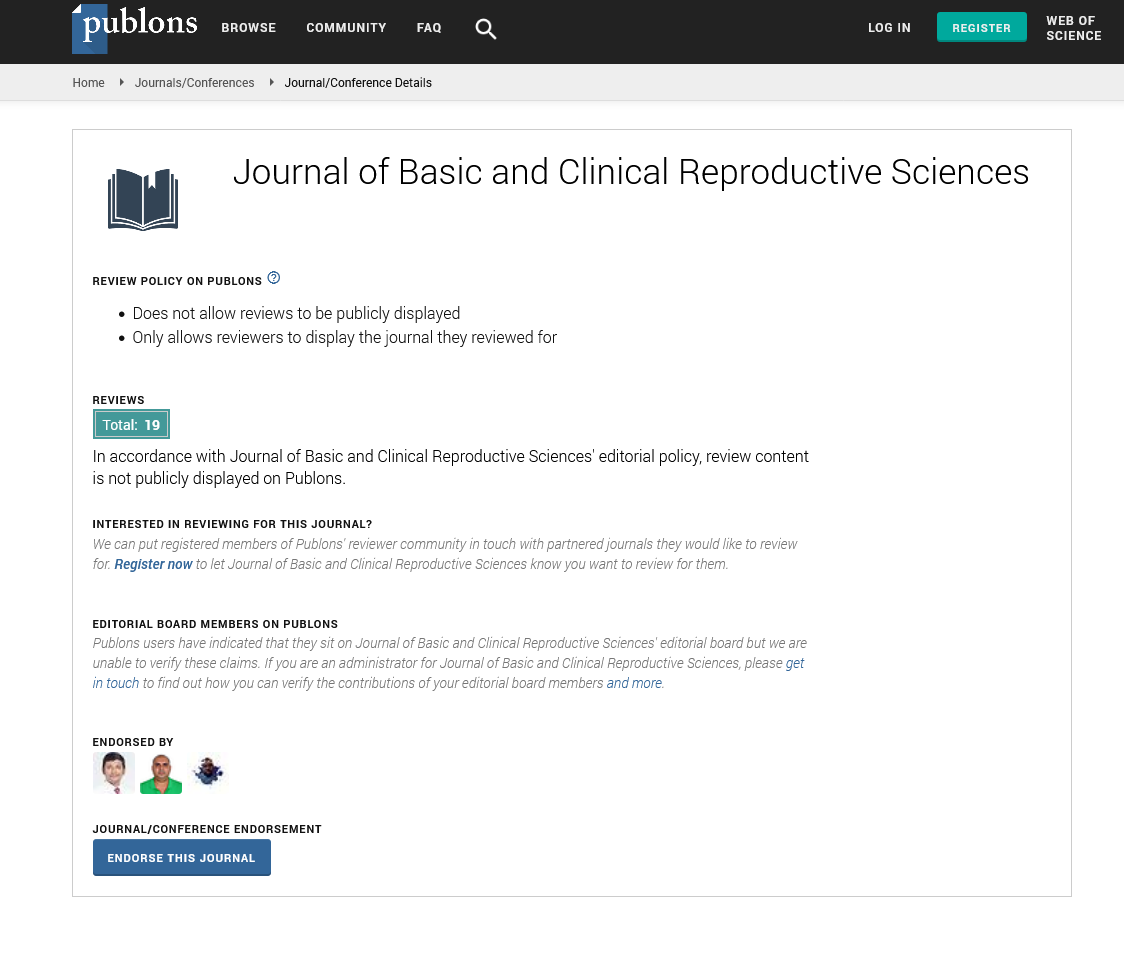Commentary - Journal of Basic and Clinical Reproductive Sciences (2023) Volume 12, Issue 3
Endometriosis: A Chronic Condition Affecting Women's Health
Received: 24-May-2023, Manuscript No. JBCRS-23-101957; Editor assigned: 26-May-2023, Pre QC No. JBCRS-23-101957 (PQ); Reviewed: 09-Jun-2023 QC No. JBCRS-23-101957; Revised: 16-Jun-2023, Manuscript No. JBCRS-23-101957 (R); Published: 23-Jun-2023
This open-access article is distributed under the terms of the Creative Commons Attribution Non-Commercial License (CC BY-NC) (http://creativecommons.org/licenses/by-nc/4.0/), which permits reuse, distribution and reproduction of the article, provided that the original work is properly cited and the reuse is restricted to noncommercial purposes. For commercial reuse, contact reprints@pulsus.com
Description
Endometriosis is a complex and often misunderstood chronic condition that affects millions of women worldwide. It occurs when the tissue similar to the lining of the uterus, called the endometrium, grows outside the uterus, typically in the pelvic region. This misplaced tissue responds to hormonal changes during the menstrual cycle, leading to pain, inflammation, and other symptoms. Endometriosis can significantly impact a woman’s quality of life, fertility, and overall well-being. In this, one can study the causes, symptoms, diagnosis, and management options for endometriosis.
Causes and risk factors
The exact cause of endometriosis is unknown, but several factors have been identified as potential contributors. Retrograde menstruation, where menstrual blood flows back into the pelvic cavity instead of exiting the body, is one possible explanation. Genetic factors, hormonal imbalances, immune system disorders, and environmental factors may also contribute to the development of endometriosis. Additionally risk factors, such as health conditions, uterine abnormalities, may increase the risk of developing endometriosis on early onset of menstruation, long or heavy menstrual periods, and a family history of the condition, increase the likelihood of endometriosis.
Symptoms and impact
The most common symptom of endometriosis is pelvic pain, which may vary in intensity and duration. Other symptoms include painful periods, infertility, fatigue, gastrointestinal issues, and urinary problems. The severity of symptoms does not necessarily correlate with the extent of the disease, and some women with mild endometriosis may experience debilitating pain, while others with severe cases may be asymptomatic. The chronic nature of the condition can lead to emotional distress, depression, and anxiety, significantly impacting a woman’s overall quality of life and career.
Diagnosis
Diagnosing endometriosis can be challenging due to its wide range of symptoms and the lack of a definitive diagnostic test. A detailed medical history, pelvic examination, and imaging studies such as ultrasounds may provide valuable information. However, laparoscopy, a minimally invasive surgical procedure, remains the gold standard for diagnosis. During laparoscopy, a surgeon inserts a small camera through a tiny incision in the abdomen to visualize and remove any abnormal tissue. This procedure allows for both diagnosis and treatment of endometriosis.
Management and treatment
While there is no cure for endometriosis, several treatment options aim to alleviate symptoms and improve the quality of life for affected women. Pain management is often a primary focus, and over-the-counter pain relievers or hormonal medications, such as birth control pills, may be prescribed. For more severe cases, Gonadotropin-Releasing Hormone (GnRH) agonists or antagonists, which suppress ovarian function, may be recommended. Surgical interventions, including laparoscopic excision or hysterectomy, are considered in cases where medication fails to provide relief or when fertility is not a concern.
Fertility and pregnancy
Endometriosis can significantly affect a woman’s fertility. However, many women with endometriosis can conceive with or without medical intervention. Fertility treatments such as In Vitro Fertilization (IVF) or surgical procedures, such as laparoscopic excision, may help improve the chances of conception. It is advisable for women with endometriosis who wish to become pregnant to consult with a fertility specialist.
Conclusion
Endometriosis is a chronic condition that affects millions of women worldwide. It is characterized by the presence of endometrial- like tissue outside the uterus, leading to chronic pain, infertility, and other significant health issues. By raising awareness and improving understanding, one can empower women to seek timely diagnosis and effective management are important to alleviate symptoms and improve outcomes for affected individuals. While there have been advancements in medical and surgical treatments, further research is needed to unravel the mysteries surrounding endometriosis, develop more targeted therapies, and ultimately find a cure for this challenging condition.


